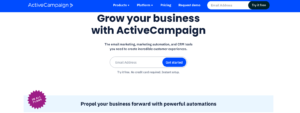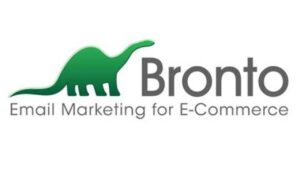Understanding the Concept of Drip
Often used in the domain of email marketing, the term “drip” refers to a communication strategy that sends, or “drips,” a set of messages to customers over time. These messages often take the form of email marketing, although they could be sent through other channels as well. The primary purpose of this gradual way of communication is to foster and nurture prospective customer relationships through regular engagement, gradually leading them down the conversion and customer retention funnel.
The mechanism behind drip marketing is simple yet effective. Triggered by various user actions or behavior such as profile creation, cart abandonment, or product purchase, these communications are automated and customized to the user’s journey. Often supported by marketing automation tools, this strategy allows a brand to remain in constant contact with prospective customers, offering relevant information at key stages of their purchase journey, thus making it a crucial concept in modern digital marketing landscapes.
Drip Marketing: A Detailed Overview
In today’s highly competitive marketplace, marketers are continually in search of ways to engage with consumers more effectively and efficiently. One approach that has shown considerable promise is the concept of Drip Marketing, which has emerged as a unique blend of both marketing science and artistry. Its main premise lies in the delivery of a set of marketing messages to customers over time, thus the term ‘drip’, which signifies a slow and steady approach, rather than a massive one-time communication blast.
Drip marketing relies on automation for the timed release of content, fostering consistent engagement with customers. This toolkit mandates the implementation of pre-prepared and personalized messages, tailored on the customer’s journey with the brand. It could include emails, social media posts, SMS messages, among others, ensuring the maintenance of a steady conversation with the clients. More importantly, it stresses the creation of value at each interaction, thereby fostering customer loyalty and retention.
The Basic Mechanics of Drip Campaigns
Drip campaigns can be understood as methodically planned, automated sequences of promotional communication, strategically targeted to engage consumers over a period of time. The mechanics of these campaigns revolve around the use of triggered emails or messages, intended to nurture leads through the marketing funnel towards a desired action. Often, the communication sequence responds or adapts to the recipient’s behavior, fostering an environment of personalised interaction and reducing marketing pressure.
In creating a drip campaign, marketers begin with segmenting the prospective customers based on a variety of demographic, psychographic and behavioural criteria. This aids in crafting highly personalised and relevant messages. Following this, an automated schedule is devised, outlining the frequency and timings of dripping content into the consumers’ inboxes, essentially ensuring that communication is spaced out, yet consistent. Emails are then drafted, designed and made automation-ready, ultimately setting the stage for a successful drip campaign roll-out.
• The first step in creating a drip campaign is to segment the prospective customers. This segmentation can be based on various factors such as demographic data (age, gender, location), psychographic criteria (interests, lifestyle, values), and behavioural patterns (purchase history, browsing behaviour). By understanding these variables about their target audience, marketers can create highly personalised messages that resonate with each individual consumer.
• Once the segmentation process is complete, an automated schedule for dripping content needs to be devised. This schedule outlines when and how often emails or messages will be sent out to consumers. It’s crucial for this communication to be spaced out appropriately – too frequent and it may feel intrusive; too infrequent and it might lose its impact.
• After scheduling comes the drafting of emails or messages themselves. These should not only look aesthetically pleasing but also contain compelling content that encourages recipients towards a desired action – like making a purchase or signing up for a service.
• Finally, these drafted emails are made automation-ready. This means they’re set up in such a way that they’ll automatically get sent out according to the previously outlined schedule without any further manual intervention required from the marketing team.
Overall, successful implementation of drip campaigns requires careful planning at every stage – right from customer segmentation through crafting engaging content till setting up automation systems effectively.
Exploring the Benefits of Using Drip
Drip marketing, often facilitated by automated systems, offers several notable benefits. First, it provides a high level of efficiency. Instead of individually crafting and sending each communication, marketers utilize specialized software to automatically distribute content based on pre-established criteria. This not only minimizes the risk of human error but also dramatically reduces the time and effort required to manage the marketing initiative.
In addition to its efficiencies, drip marketing offers the invaluable advantage of adaptability. Marketers may easily adjust campaigns based on their recipients’ previous behaviours, such as site visits, purchases, or interactions with other content. These adjustments facilitate targeted communications tailored to each recipient’s specific interests, amplifying engagement rates and fostering stronger customer relationships. This level of personalization is often what sets successful businesses apart in today’s competitive markets.
The Role of Drip in Email Marketing
Email marketing has experienced a significant transformation with the introduction of drip campaigns. As a strategic approach, these campaigns effectively cultivate potential customers over a period of time with targeted and scheduled email communications. These emails serve various purposes, ranging from welcoming new subscribers and onboarding users, to up-selling or cross-selling products, and nurturing prospective leads.
In the context of email marketing, drip plays a pivotal role by delivering the right message to the right person at the right time. This personalized approach ensures greater relevance and engagement, leading to increased conversion rates. Furthermore, drip email marketing allows for automatic trigger-based communications based on specific user actions or behavior, thus providing a more dynamic and responsive interaction between the business and its audience. This strategic role of drip renders it an integral part of any effective email marketing arsenal.
Effective Strategies for Drip Campaigns
To achieve significant results with drip campaigns, it is essential to maintain personalization throughout your messages. The practice of personalization is more than just addressing customers by their names; it involves recognizing customer behaviors and preferences, ensuring content resonates with the recipient. Thus, the cornerstone of any successful drip campaign is a comprehensive understanding of customer behaviors, needs, and desires. This data-driven approach allows businesses to tailor the timing and content of their messages for maximum engagement.
Secondly, sequencing is a pivotal strategy when it comes to improving drip marketing efficacy. Proper sequencing of emails will help to create a smooth and coherent consumer journey, where each message naturally evolves from the prior one. This not only helps maintain interest and engagement but also drives prospects down the funnel more effectively. Essentially, the goal of each message should be to prompt the subscriber to progress further down the sales funnel, whether through educating, inspiring trust, or inciting action. Committing to proper sequencing automatically ensures that there is a definite aim for each correspondence sent to customers.
Drip in E-commerce: An Essential Tool
In the eCommerce sphere, utilizing the drip model goes beyond conventional email marketing. It provides a more efficient, adaptable, and customer-centric approach to achieving businesses’ sales targets. With the exponential increase in online shopping and digital commerce, the need for a tailored and personalized connection with prospects and existing customers has never been more critical. Drip campaigns help businesses address this essential need, ushering in a strategic and data-driven phase of customer engagement, relationship management, and ultimately, increased sales.
The significant advantage of the drip model in eCommerce is its versatility and capacity to manage various scenarios seamlessly. For a new subscriber or prospect, the drip campaign can be initiated with a warm welcome email, gradually progressing to product recommendations based on their browsing history. For existing customers, the drip tool is beneficial for cross-selling and up-selling, offering discounts to regular purchasers, or promoting loyalty programs. All these are aimed at nurturing the customer’s journey, reinforcing brand loyalty, and driving engagement.
Case Studies: Success Stories with Drip
One compelling example of a drip marketing success story can be found in an online clothing retailer, Stitch Fix. With the goal of keeping customers engaged and encouraging repeat purchases, they developed an innovative drip campaign that tailored content to individual preferences. Following each purchase, the customer would receive a series of personalized emails based on their shopping behavior and preferred fashion style. This strategic approach significantly boosted their customer retention rate, exemplifying the power of a well-executed drip campaign to foster customer loyalty and drive sales.
Let us turn to another example from a different industry: online learning platform, Coursera. In order to motivate users towards course completion, Coursera started sending educational material, reminders, and encouragement emails at regular intervals to the learners. The implementation of this drip marketing strategy resulted in more engaged users and an increase in completed courses, providing tangible evidence that drip campaigns can significantly enhance user engagement, if properly coordinated.
Overcoming Challenges Associated with Drip
Drip marketing, while remarkably effective and innovative, isn’t without its fair share of complications. One primary concern involves the technical aspect of setting up a successful drip campaign. This requires a sophisticated understanding of marketing automation software – ensuring that the right messages reach the right audiences at the appropriate stages in their buying journey. Managing complex trigger events can be a daunting task, particularly for those relatively unacquainted with the software.
Moreover, content creation stands as another significant challenge. Each email, text message, or social media post in a drip campaign must be carefully crafted to engage, inform, and subtly guide the customer toward a desired action. This necessitates not only an in-depth understanding of the target audience, but also a refined skill set that includes compelling copywriting and strategic planning. In the face of these challenges, continuous learning and refining of strategies are key. One way businesses can stay ahead is by regularly testing their drip campaigns, adjusting course when necessary, and remaining adaptable to changing technological trends.
Future Trends in Drip Marketing
Innovation continues to influence various facets of marketing and drip campaigns are certainly no exception. As technology evolves, marketers are discovering new alternatives to enhance their strategies and target their customers more effectively. Artificial Intelligence (AI) and predictive analytics are two major trends likely to shape the future of drip marketing. These technologies provide a capacity to analyze customer behavior more accurately, predict future trends, and customize campaigns to meet individual customer needs.
Furthermore, the advent of omnichannel marketing highlights the importance of optimizing drip campaigns across multiple platforms. Consumers have now shifted from single-channel communication to interacting with brands across various touchpoints. This paradigm shift demands businesses to seamlessly integrate their drip marketing strategies across different channels including email, social media, mobile apps, and even in-store engagements. Consistency in sending personalized messages across these platforms ensures a unified customer experience, ultimately fostering brand loyalty and customer retention.
What is the concept of Drip Marketing?
Drip marketing is a communication strategy that sends, or “drips,” a pre-written set of messages to customers or prospects over time. These messages often take the form of email marketing, although they can also involve other channels like direct mail or social media.
Could you provide a detailed overview of drip marketing?
Drip marketing involves sending out marketing information to prospects repeatedly over an extended period. This method allows a company to remain at the forefront of potential customers’ minds, making them more likely to convert into a customer.
How do drip campaigns usually work?
Drip campaigns work by sending out a set of messages or information based on specific timelines or user actions. They are primarily used to engage and nurture leads, keeping the brand at the top of the consumer’s mind.
What are the benefits of using drip marketing?
Drip marketing helps businesses keep in touch with prospects without being overly aggressive or annoying. It allows for highly targeted communication and can help increase sales. It also enables businesses to stay engaged with their audience, providing them with valuable content.
What role does drip play in email marketing?
Drip plays a crucial role in email marketing by allowing businesses to send out automated, targeted emails to their audience. These emails can be personalized and scheduled based on the user’s behavior, making the communication more effective.
Can you suggest some effective strategies for drip campaigns?
Some effective strategies for drip campaigns include segmenting your audience, personalizing your messages, testing different types of content, and monitoring your results to make necessary adjustments.
How is drip marketing utilized in e-commerce?
In e-commerce, drip marketing is used to automate the customer journey, from welcome emails to thank you emails, cart abandonment reminders, and re-engagement campaigns. It allows businesses to nurture leads and increase conversion rates.
Are there any case studies about success stories using drip marketing?
Yes, numerous businesses have successfully used drip marketing to increase their customer engagement and conversion rates. However, the specifics might vary depending on the nature and scope of the business.
What challenges might one face while using drip marketing?
Some challenges associated with drip marketing include maintaining the relevancy of the content, managing the frequency of communications, ensuring the messages are not marked as spam, and continuously engaging the audience.
What are the future trends in drip marketing?
Future trends in drip marketing may include a greater focus on personalization, AI-driven automation, multi-channel drip campaigns, and more interactive content. These trends aim to make drip marketing more efficient and effective.




